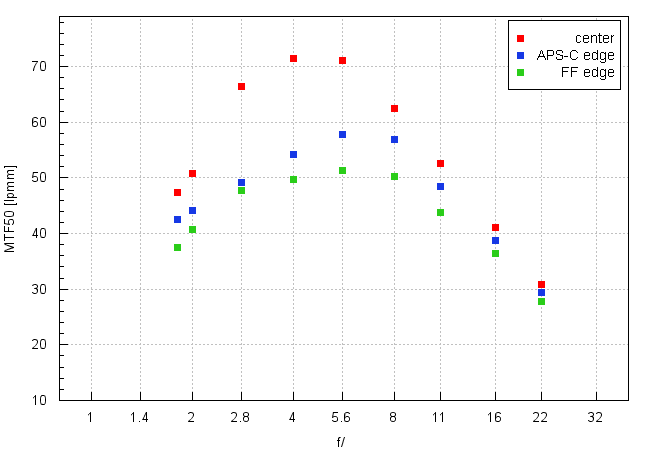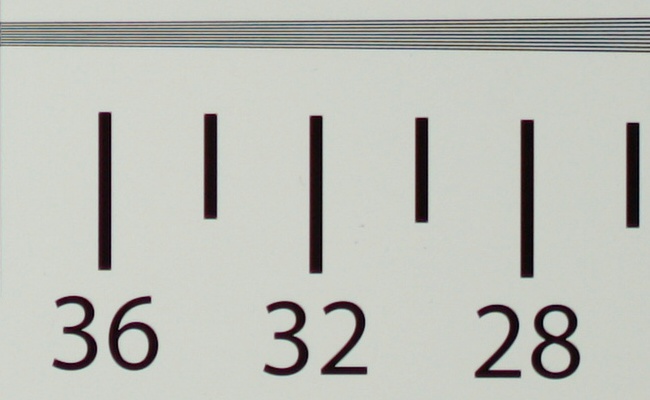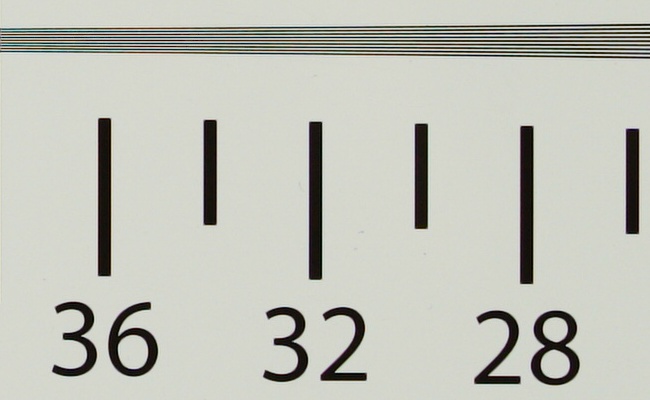Sony FE 35 mm f/1.8
4. Image resolution
Let's check how the Sony FE 35 mm f/1.8 compares – its results in the frame centre, on the edge of the APS-C sensor and on the edge of full frame presents a graph below.

Please Support UsIf you enjoy our reviews and articles, and you want us to continue our work please, support our website by donating through PayPal. The funds are going to be used for paying our editorial team, renting servers, and equipping our testing studio; only that way we will be able to continue providing you interesting content for free. |
- - - - - - - - - - - - - - - - - - - - - - - - - - - - - - - - - - - - - - - - - - - - - - - -
You can observe a quite typical performance for this class of equipment. When the lens is wide open and near the maximum relative aperture, the image quality is sensible in the frame centre and it gets better very quickly on stopping down. By f/2.8 results are already very good and the peak of its possibilities the FE 35 mm f/1.8 reaches by f/4.0 and f/5.6, where it is able to exceed a very good level of 70 lpmm. Such a performance is far better than the results of the more expensive Sonnar 2.8/35.
When it comes to the edge of the APS-C sensor we shouldn't complain. Even by f/1.8 the results slightly exceed the decency level and further stopping down the aperture allows you to notice a distinct improvement if image quality, even if it is not as fast as in the centre of the frame. The maximum values you can observe near f/5.6 where you get resolution of a very good level, reaching almost 60 lpmm.
The edge of full frame is the place where you can express your first serious reservations. At the maximum relative aperture image quality is simply unnacceptable. You have to close the lens down to f/2.0-2.2 in order to reach a decent level of resolution. The peak of the performance can be noticed near f/5.6 – still, this time, it is slightly over 50 lpmm so definitely lower. As you see, no fireworks at this point but, fortunately, the lens still allows you to get sharp images across the frame and in a rather wide range of apertures too.
The summary of this chapter can be only positive. The lens fares exceedingly well in the frame centre and is quite good on the edge of the APS-C sensor. It has one weak spot, the maximum relative aperture on the edge of full frame, but it is a forgivable slip-up, especially as it disappears on slight stopping down.
At the end of this chapter, traditionally, we present crops taken from photos of our resolution testing chart saved as JPEG files alongside RAW files we used in our analysis above.
| A7R II, JPEG, 35 mm, f/1.8 |
 |
| A7R II, JPEG, 35 mm, f/4.0 |
 |






